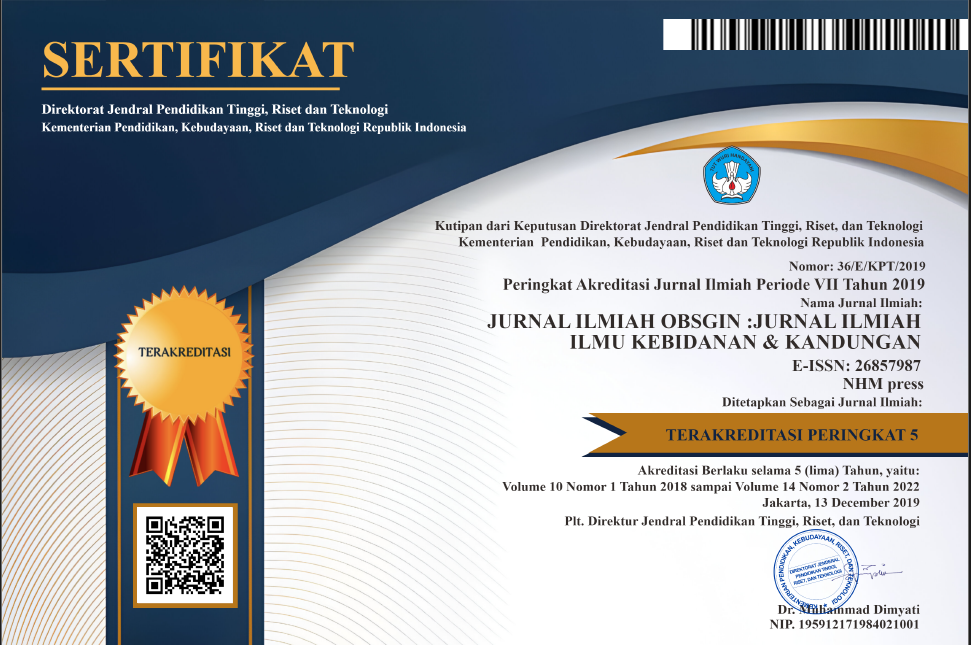FAKTOR-FAKTOR YANG BERHUBUNGAN DENGAN PENGGUNAAN KB SUNTIK 3 BULAN
Abstract
Indonesia is facing population problems and the quality of human resources with high birth rates every year. Efforts to reduce the growth rate include family planning (KB), one of which is the 3-month injection contraceptive. Within 1 year, the number of 3-month injectable contraceptive acceptors at TPMB Riris Nuristiani Marsa was 234 people, of which 198 people or 84.6% used 3-month injectable contraceptives in a row for >2 years. This is because 3-month contraceptive injections are widely used because they are more comfortable, have fewer side effects and do not interfere with the menstrual cycle, compared to birth control pills which require taking medication every day and long-term contraception such as IUDs or implants, because the side effects during installation are changes. the menstrual cycle becomes longer and painful, spotting between periods, heavy bleeding during the menstrual period which causes anemia, perforation of the uterine wall and anesthesia during the installation procedure. This study aims to determine the factors associated with the use of 3-month injectable contraceptives.
The research method is quantitative analytical with a cross sectional design. The population determined was 3-month injectable contraceptive acceptors who visited TPMB Riris Nuristiani Marsa in the period November to December 2023, totaling 39 people. This research sample used total sampling, namely 39 respondents. This research instrument uses a questionnaire sheet. The analysis used univariate and bivariate with statistical tests using the chi-square test.
The results of the study were 39 respondents, 33 people (84.6%) had used contraceptive injections for 3 consecutive months without interspersing with other methods ≥ 2 years and 6 people (15.4%) < 2 years. The reason why 3-month contraceptive injections are widely used even though they are ≥ 2 years is because they work effectively, are practical, and the price is relatively cheap, although it is best to use a 3-month injection for a maximum of 2 years. Bivariate analysis showed a relationship between the use of 3-month injectable contraceptives with knowledge, p-value = 0.028, employment, p-value = 0.042, and support from health workers, p-value = 0.028. What has no relationship are the variables age, education and parity.
This research is expected to provide knowledge regarding the factors associated with the use of 3-month injectable contraceptives.











